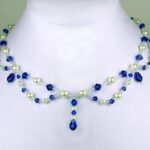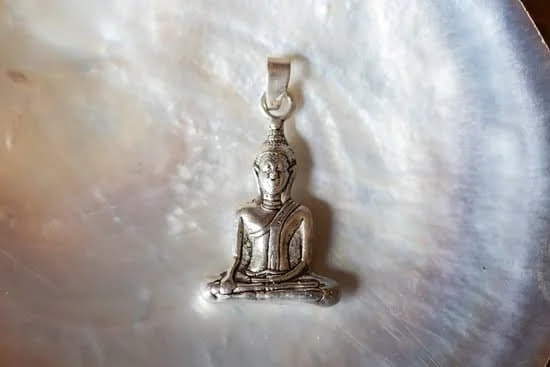How is fine jewelry made? The process of creating fine jewelry is a meticulous and intricate art form that has been perfected over centuries. From the initial design concept to the final polishing and engraving, every step involves precision and skill. In this article, we will explore the fascinating world of fine jewelry making, taking a closer look at the history, techniques, and the future of this timeless craft.
Fine jewelry making has a rich history that dates back to ancient civilizations, where skilled artisans crafted exquisite pieces by hand. Over time, the art of jewelry making evolved, incorporating new techniques and designs that reflected the cultural and artistic trends of each era. Today, contemporary jewelers continue to draw inspiration from these traditions while embracing innovative technologies to push the boundaries of creativity.
From selecting the best materials to the final inspection process, creating fine jewelry requires an in-depth understanding of both craftsmanship and artistry. The design process begins with a concept that transforms into detailed sketches before being brought to life through metalworking and gemstone setting. Each stage requires careful consideration and expertise to ensure that the final product meets the highest standards of quality and beauty.
As consumers become more discerning about their purchases, there is a growing appreciation for handcrafted fine jewelry over mass-produced pieces. The value of artisanal craftsmanship is evident in every intricately designed piece, showcasing the dedication and passion that goes into creating each unique work of art. Despite technological advancements, the timeless allure of handcrafted fine jewelry continues to captivate enthusiasts around the world.
The Design Process
Fine jewelry making is an intricate and detailed process that begins with the design phase. This crucial step involves transforming creative ideas into tangible sketches that will serve as the blueprint for the final piece of jewelry. The design process requires skill, artistic vision, and a deep understanding of the properties of different materials.
Understanding Client Needs
One of the first steps in the design process is to understand the client’s needs and desires. Whether it’s crafting a custom engagement ring or a unique necklace, jewelers need to have a clear understanding of what their clients are looking for. This may involve multiple consultations and discussions to ensure that the final piece aligns with the client’s vision.
From Concept to Sketch
Once the jeweler has a clear understanding of what the client wants, they can start translating these ideas into sketches. This often involves several iterations as designs are refined and adjusted based on client feedback. Specialized software may be used to create detailed digital renderings, allowing clients to visualize how their jewelry will look before production begins.
The Role of Creativity
The design process also heavily relies on creativity and artistic flair. Jewelry designers must find a balance between creating aesthetically pleasing pieces while considering practicality and wearability. They must also stay updated with current trends in fashion and technology while ensuring that each piece reflects timeless beauty and elegance.
This initial phase sets the foundation for bringing fine jewelry to life, showcasing how critical attention to detail and artistic talent are crucial in creating masterful pieces that will be treasured for generations to come.
Selecting the Best Materials for Fine Jewelry
Importance of Quality Materials
The process of making fine jewelry begins with the careful selection of high-quality materials. The durability, appearance, and overall value of the final piece depend greatly on the materials used. Precious metals such as gold, platinum, and silver are often chosen for their ability to withstand wear and tear while maintaining their luster. Additionally, gemstones like diamonds, rubies, sapphires, and emeralds are selected for their beauty and rarity.
Ethical Sourcing
In recent years, there has been a growing emphasis within the fine jewelry industry on ethical sourcing practices. This means that jewelers must ensure that the materials they use are obtained in a responsible and sustainable manner, without causing harm to people or the environment. Many designers and manufacturers now strive to use ethically sourced diamonds and gemstones, as well as recycled metals to create more socially responsible pieces.
Collaboration With Suppliers
Jewelry makers often work closely with suppliers to obtain the best possible materials for their creations. They establish relationships with mines, refineries, and other sources of raw materials to ensure that they have access to top-quality metals and gemstones. These collaborations allow jewelry makers to have greater control over the sourcing process and the quality of materials used in their designs.
The Art of Metalworking
The process of creating fine jewelry involves various intricate steps, with one crucial stage being the art of metalworking. This step is where the foundation of the jewelry piece is crafted, setting the stage for the addition of gemstones and other embellishments. Metalworking begins with the selection of the appropriate metal, such as gold, silver, platinum, or other precious metals. Artisans then carefully shape and form the metal to create the desired base for the jewelry item.
One of the most common techniques used in metalworking for fine jewelry is known as “lost-wax casting.” This method involves creating a wax model of the jewelry design, which is then encased in a mold.
The mold is heated to melt away the wax, leaving behind a cavity in the shape of the desired piece. The molten metal is then poured into this cavity and allowed to cool and solidify, resulting in a unique and intricately designed base for the jewelry.
In addition to casting, other techniques such as forging, soldering, and engraving are also employed in metalworking for fine jewelry. Each method requires precision and skill to ensure that the final product meets high-quality standards. The art of metalworking truly showcases the expertise and craftsmanship that goes into creating fine jewelry pieces.
| Metalworking Techniques | Description |
|---|---|
| Lost-Wax Casting | This method involves creating a wax model of the jewelry design, which is then encased in a mold. The mold is heated to melt away the wax, leaving behind a cavity in the shape of the desired piece. |
| Forging | This technique involves shaping and manipulating metal through processes such as hammering or pressing to create unique designs for jewelry pieces. |
| Soldering | Soldering is used to join different parts or components of a jewelry piece together using heat and a filler material like silver or gold solder. |
Adding Sparkle
The process of setting gemstones into fine jewelry is a delicate and intricate one that requires great skill and precision. The first step in this process is to carefully examine the gemstone, checking for any imperfections or flaws that could affect its setting. Once the gemstone has been deemed suitable for use, the setter will begin the painstaking task of securing it within the metal framework of the jewelry piece.
There are several different methods for setting gemstones, including prong setting, bezel setting, and channel setting, each of which requires its own specialized techniques and tools. During this process, the setter must ensure that the gemstone is held securely in place while also allowing it to catch and reflect light effectively. This often involves carefully adjusting the metal around the stone to create a snug fit without causing any damage.
One of the most important aspects of setting gemstones is achieving an aesthetically pleasing final result. This means ensuring that each stone is aligned correctly and sits at just the right angle to maximize its brilliance and shine. The precise nature of this work often requires a great deal of patience and attention to detail, as even the slightest error could have a significant impact on the overall appearance of the jewelry piece.
| Methods | Description |
|---|---|
| Prong Setting | A common method that uses small metal claws to hold the gemstone in place. |
| Bezel Setting | Involves creating a metal collar around the edge of the stone to secure it. |
| Channel Setting | Uses two strips of metal to hold multiple stones in place between them. |
The Finishing Touch
Polishing and engraving are crucial steps in the process of making fine jewelry. These final touches elevate the piece from a raw creation to a stunning work of art. The polishing process involves carefully refining the surface of the metal, creating a smooth and lustrous finish. Meanwhile, engraving adds a personal touch or intricate designs to the jewelry, adding depth and character to the piece.
Polishing Process
- The first step in polishing is to remove any imperfections or rough spots on the metal surface using specialized tools.
- Next, the jewelry piece is smoothed using various grades of sandpaper or abrasive compounds until it achieves a mirror-like finish.
- Finally, the piece undergoes buffing to bring out its natural shine and luster.
Engraving Technique
- For hand engraving, skilled artisans use sharp tools to carefully etch designs or inscriptions onto the jewelry piece.
- Laser engraving is also used for precision and consistency in more intricate designs or when dealing with delicate materials.
- Engraving adds a personal touch to custom pieces or enhances the overall aesthetic of the jewelry.
These meticulous techniques require precision and artistry to ensure that each piece meets high standards and reflects the craftsmanship it was made with. Polishing and engraving are what truly bring fine jewelry to life, making each piece unique and exquisite.
Quality Control
Once the intricate process of crafting fine jewelry is complete, quality control becomes a crucial step in ensuring that the final product meets the high standards expected of fine jewelry. The inspection process involves several meticulous steps to guarantee that every piece is flawless and ready to be worn or admired.
Here are some key aspects of the quality control process for fine jewelry:
- Visual Inspection: Each piece of jewelry is carefully examined by skilled professionals to detect any imperfections or irregularities in the overall appearance.
- Gemstone Assessment: Gemstones, whether they are diamonds, rubies, sapphires, or emeralds, undergo rigorous evaluation to confirm their authenticity, clarity, cut, and color. This meticulous assessment ensures that only top-quality gemstones are used in fine jewelry.
- Metal Purity Verification: For gold, silver, and platinum jewelry, verifying the metal’s purity is essential. Using specialized tools and techniques, experts conduct tests to determine the exact composition of the metal used in each piece.
The importance of quality control in fine jewelry production cannot be overstated. It demonstrates a commitment to excellence and craftsmanship while also providing customers with confidence in their purchase. By adhering to stringent quality control measures, fine jewelry artisans uphold their reputation for creating exceptional pieces that will be treasured for generations.
In an industry where precision and perfection are paramount, quality control serves as the ultimate assurance of superior craftsmanship and attention to detail. It is a vital part of the fine jewelry making process that truly sets these exquisite pieces apart from mass-produced alternatives.
The Value of Handcrafted Fine Jewelry vs Mass-Produced Pieces
When it comes to fine jewelry, the value of handcrafted pieces often far outweighs that of mass-produced items. The process of creating handcrafted fine jewelry involves a level of precision, attention to detail, and artistry that simply cannot be replicated in mass production. Each piece is carefully crafted by skilled artisans who have dedicated their lives to mastering the craft of jewelry making.
One of the key differences between handcrafted fine jewelry and mass-produced pieces is the level of customization and personalization available in handcrafted items. Artisans work closely with their clients to bring their visions to life, creating one-of-a-kind pieces that hold special meaning and significance. In contrast, mass-produced jewelry is often generic and lacks the individuality that comes with handmade pieces.
In addition, the quality of materials used in handcrafted fine jewelry sets it apart from mass-produced pieces. Artisans carefully select the finest gemstones and metals, taking into account factors such as clarity, color, and cut to ensure that each piece meets the highest standards of quality.
This attention to detail can be seen and felt in every handcrafted piece, adding to its overall value and desirability. It’s important for consumers to understand these differences when considering a purchase, as it ultimately impacts not only the aesthetic appeal but also the lasting value of the jewelry they choose.
Overall, the value of handcrafted fine jewelry lies in its unique blend of artistry, craftsmanship, and quality. As technology continues to advance and innovative techniques are introduced in the industry, it’s important for consumers to recognize and appreciate the timeless tradition of handcrafted fine jewelry making.
The Future of Fine Jewelry Making
As technology continues to evolve, the future of fine jewelry making is also being shaped by innovative techniques and technologies. One of the most significant advancements in the industry is the use of 3D printing for creating intricate and unique jewelry designs.
This cutting-edge technology allows jewelry makers to bring their creative concepts to life with unprecedented precision and detail. By utilizing 3D printing, designers can experiment with complex shapes and patterns that were once difficult or impossible to achieve through traditional methods.
Another emerging trend in fine jewelry making is the incorporation of sustainable practices and materials. With increasing awareness of environmental impact, many jewelry makers are seeking out ethically sourced gemstones and metals, as well as exploring alternative materials such as lab-grown diamonds and recycled precious metals. These sustainable approaches not only contribute to a more environmentally friendly industry but also resonate with conscientious consumers who prioritize ethical production processes.
Furthermore, the use of virtual reality (VR) and augmented reality (AR) has become a game-changer in the way fine jewelry is showcased and experienced by consumers. VR technology allows customers to virtually try on different pieces of jewelry, providing an immersive shopping experience from the comfort of their own homes.
Meanwhile, AR applications enable customers to see how a specific piece of jewelry would look on them in real-time, using their smartphone or tablet. These innovative technologies are revolutionizing the way consumers interact with fine jewelry, offering a more personalized and convenient shopping experience.
Conclusion
In conclusion, the art of fine jewelry making has a rich history that dates back centuries, and it continues to evolve with modern techniques and technologies. From the initial concept to the final product, the process of creating fine jewelry is a meticulous and intricate craft that requires skill, precision, and creativity. The combination of traditional handcrafting methods with innovative approaches allows for the creation of timeless pieces that are both stunning and enduring.
The value of handcrafted fine jewelry versus mass-produced pieces cannot be understated. Each handmade piece is imbued with the passion and expertise of the artisan, resulting in a level of quality and attention to detail that is simply unmatched. The care and devotion put into every step of the production process ensure that each piece is unique and holds its own special allure.
As we look towards the future of fine jewelry making, it’s fascinating to consider how innovative techniques and technologies will continue to shape this timeless artistry. While new methods may come into play, one thing remains certain: the art of crafting fine jewelry will always be revered for its exquisite beauty and unparalleled craftsmanship.
Frequently Asked Questions
How Do You Manufacture Fine Jewelry?
Manufacturing fine jewelry involves a meticulous process that begins with designing the piece and selecting high-quality materials like gold, silver, diamonds, and precious gemstones. Once the design is finalized, skilled artisans use traditional jewelry-making techniques such as casting, soldering, stone-setting, and polishing to create the finished piece.
Quality control is crucial throughout the process to ensure that each piece meets the highest standards.
What Makes Jewelry Fine?
Fine jewelry is distinguished by the use of precious metals like gold and platinum, as well as high-quality gemstones such as diamonds, rubies, sapphires, and emeralds. The craftsmanship and attention to detail in creating fine jewelry also set it apart from mass-produced or costume jewelry. Additionally, fine jewelry often features intricate designs and unique artistic expression.
What Is Used to Make Fine Jewelries?
A variety of materials are used to make fine jewelry, including precious metals like gold, silver, and platinum. Gemstones such as diamonds, rubies, sapphires, emeralds are also commonly used for their beauty and durability.
Other materials like pearls and semi-precious stones may also be incorporated into fine jewelry designs for added elegance and sophistication. Skilled artisans are responsible for combining these materials through traditional jewelry-making techniques to create stunning pieces of fine jewelry.

Welcome to my jewelry blog! My name is Sarah and I am the owner of this blog.
I love making jewelry and sharing my creations with others.
So whether you’re someone who loves wearing jewelry yourself or simply enjoys learning about it, be sure to check out my blog for insightful posts on everything related to this exciting topic!





